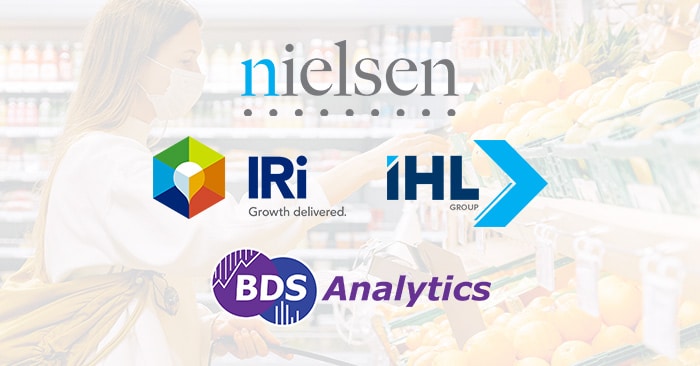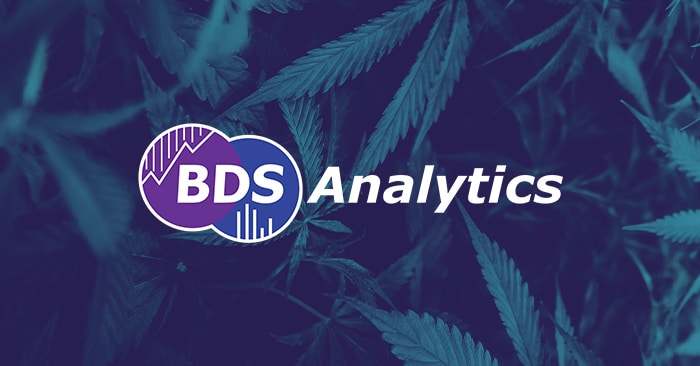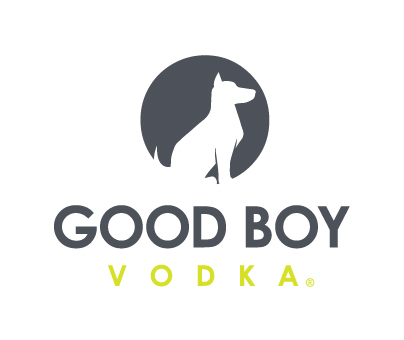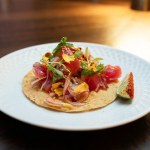COVID-19 Data Dive: Grocery, Cannabis Sales Surge as Consumers Stockpile

As COVID-19 rapidly transforms consumer behavior, data firms are closely monitoring patterns — and looking to past economic debacles to help predict an uncertain journey ahead.
IRI Explores Shopper Trends
In a report last week, research firm IRI explored current consumer behavior and trends from past economic downturns, along with spending across markets.
IRI named March 1 as the inflection point at which consumers began stockpiling items. For the week ending March 15, spending grew 55% year-over-year, with packaged food sales growing 77.2% and frozen food 78.8%. Compared to the prior week, consumers purchased 133% more pasta, along with more rice, macaroni and cheese, canned fruit and vegetables.
Reflecting on past crises like the 2008 recession may be helpful, but Joan Driggs, IRI’s VP of content and thought leadership, noted the uniqueness of COVID-19 — and that what we see now won’t necessarily stick.
“Everything is a surprise because we haven’t been here before,” Driggs said. “What will come is a little bit of a shock ripple: how things are going to kind of dip in terms of some of these products everyone stocked up on — and [aren’t] using as much as we thought.”

To help predict future patterns, IRI looked to the 2008 economic recession, along with Hurricane Irma in Florida and Hurricane Harvey in Texas in 2017, for lessons. During the 2008 recession. food and beverage and health stores remained stable, with a similar situation now: in the past month food retail spend grew 23.5% versus the prior — and 25.9% year-over-year.
But consumer behaviors are shifting. For example, consumers are prioritizing cost over convenience, and in a survey conducted March 13-15, 44.2% of low income consumers noted trouble affording groceries. To cut costs, consumers are turning to mass and club channels — multi-outlet (MULO) dollar sales grew 67% year-over-year while ecommerce grew 62%. Despite the move to mass, IRI notes drug and convenience have the opportunity to diversify their product assortment to accommodate customers close to home. Private label options are also a big draw for savings, and across brands, smaller (more affordable) packs make sense both for consumers and manufacturers seeking to improve margins.
Additionally, consumers want comfort food, with continued trial especially in categories like salty snacks, cookies and coffee. For example, frozen cookie dough grew 570% versus last year, according to IRI. After all, people want foods that make them happy, Driggs noted. As consumers encounter empty shelves missing their favorite products, they are more likely to try new brands or varieties: 16% reported doing so, while 37% went to a different retailer. Increased traction is also expected for products with vitamin D, fiber and those that promote sleep. Seasonal items, however, may take a hit with consumers not traveling or hosting large gatherings, Driggs said.
“Manufacturers [should] pivot their acknowledgement of these holidays — it might be smaller, but [we] could all use a diversion, so embrace those holidays,” she said. “These are subtle things that brands and manufacturers should be looking at.”
As panic buying dissipates after the crisis, IRI predicts sales will decline accordingly, with household penetration on items like canned fruit and shelf stable cookies unlikely to stick long term. However, brands with low penetration have potential for long term growth, even with losses from their niche consumers during the crisis. The opposite is true for major brands, IRI notes.
Other Data Highlights
Nielsen: Fuel for Eating at Home
Research firm Nielsen continues tracking the sales of CPG products, finding shelf-stable items beyond grains and beans increasingly gaining steam. For the week ending March 21, canned and pouched seafood grew 233% year-over-year and 103.5% over the prior month. As more consumers cook at home, both fresh and fully cooked meat and meat alternatives continue to grow, with fresh meat alternative sales growing 454% year-over-year. Additionally, indulgent snacks are likely fueling (and distracting) antsy kids and adults: popcorn grew 81.3% year-over-year; pretzels 70.8% and ice cream 50.2%.
BDS Analytics: Cannabis Sales Spike
In two recent webinars, research firm BDS Analytics reported how COVID-19 is affecting trends in cannabis. The firm will monitor the economic impact of COVID-19 — including the possibility of it driving consumers back to black market sales while also increasing purchase sizes in the dispensary channel. Additional webinars will be held on Fridays.
To stay open for business, many dispensaries have incorporated curbside pickup and delivery, which will likely have a long term industry impact, Jessica Lukas, SVP of commercial development, said. California set the bar by deeming them essential businesses: 71% of dispensaries remained open after California imposed shelter-in-place restrictions. March 13 saw the highest dispensary sales so far this year, BDS noted, with flower sales increasing the most, followed by edibles. Similar to grocery and alcohol, regular users will likely continue stockpiling cannabis products, and with more downtime (along with anxiety and stress) many consumers may increase their usage. Already 69% of adults in legal-use states consume or are open to consuming cannabis, with 82% of them living in populated cities or suburbs.
Due to economic concerns and lack of social interaction with budtenders to discuss new products, consumers are more likely to buy what they’re used to, Lukas noted. Some may even turn to black market sales due to economic troubles. However, the pandemic could also bring experimentation with new formats: cannabis beverage company Mad Tasty, for example, has seen a 40% sales uptick this month, according to the brand. This is just the beginning of interpreting the market across categories and industries, Lukas noted.
“There’s nothing in recent years or decades we can look to to compare this to,” Lukas said.
IHL Group: The State of Retail
COVID-19 is causing a “massive shift” in retail as consumers stock up on essentials, Greg Busek, research firm IHL Group founder and president, noted. In a webinar last week, IHL reported that retail grew $37.2 billion already in 2020, with 18.5% from food and grocery. That figure doesn’t include ecommerce, which IHL expects to increase $110 billion this year. For perspective, the entire retail industry grew $82.4 billion in all of 2019, IHL noted.
“It’s not the fact that the size of the pie is decreasing much; the size of the slices are changing dramatically,” Busek said.



















